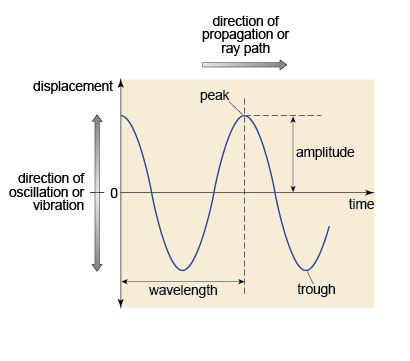2.1 The nature of light
Light is a form of electromagnetic radiation, but it is only a small part (the visible part) of the whole electromagnetic spectrum, which also includes X-rays, ultraviolet and infrared radiation, and microwaves (Figure 26). The wavelengths of visible light span the region of the electromagnetic spectrum from about 400 nm (violet) to about 700 nm (red). Some of the properties of waves, with which you may already be familiar, are summarised in Box 2.

Box 2 Learn about light waves
A wave is a disturbance that travels through a medium, transporting energy, but without permanent displacement of the medium. A wave moves by oscillations, which may be described as a regular sequence of peaks and troughs (like spreading ripples on a pond). The number of wave peaks that pass a fixed point per second is the frequency; and the distance between successive peaks is the wavelength (Figure 27). The wavelength depends on the frequency of the oscillation and the speed of propagation of the wave, according to the relationship:

The speed of a wave depends on the nature of the medium through which it travels - so, for example, the speed of sound in air is different from its speed in water.

